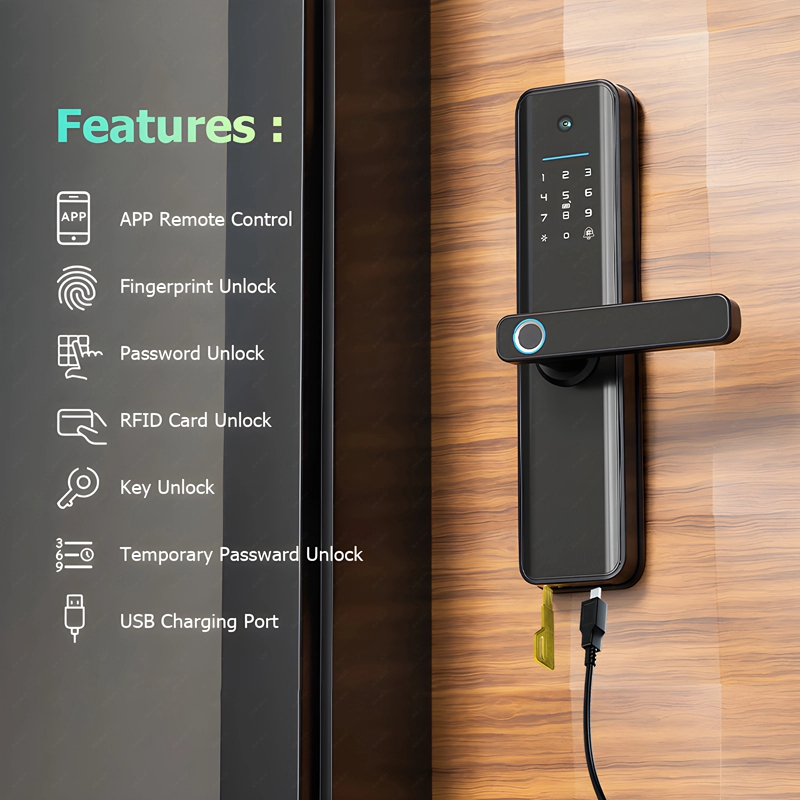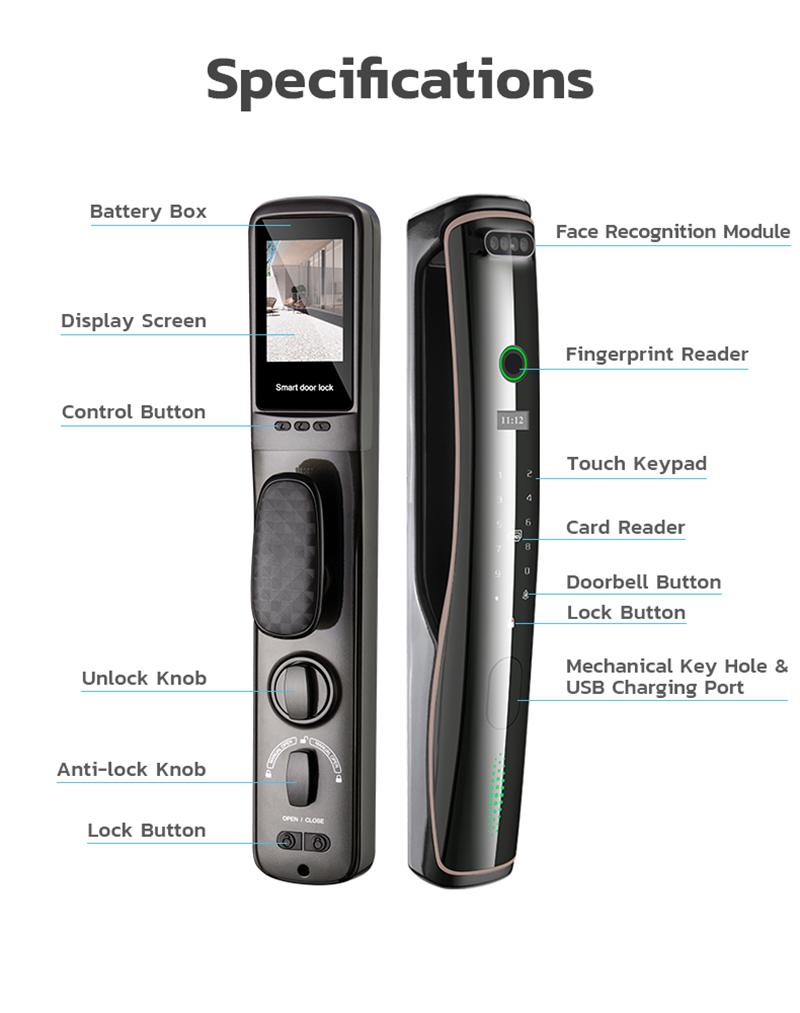With the continuous advancement of technology and the growing popularity of smart home products, smart door locks have become a preferred choice for many households. However, some people may still have concerns about using smart door locks, particularly when they run out of power and cannot open the door.
So, how can you overcome anxiety and effortlessly enter your home if you encounter a situation where your smart home door lock has no power? It’s crucial to understand the aspects related to power for fingerprint door locks. Today, we’ll take Kadonio’s smart door lock as an example to help alleviate any doubts.
Q1:
What should you do when your smart door lock has no power?
❶ Unlock with a mechanical key
According to the industry standards for electronic security locks, smart door locks are required to have a mechanical keyhole. While the convenience of smart locks has made carrying physical keys less common, users should keep a spare key in their handbag, car, or office for emergency situations. In the case of this smart lock model, the keyhole is concealed behind the handle and can be easily accessed by turning the handle, providing a convenient yet discreet solution.
❷ Unlock with an external power source
Most smart door locks have an emergency power input on their exterior panel. For example, Kadonio’s Model 801 smart door lock is powered by dry batteries. It features a USB emergency power input at the bottom of the lock, allowing you to connect a power bank and open the door lock effortlessly.
Q2:
Do smart door locks have a low battery warning?
Smart door locks are equipped with intelligence and can provide advance warnings for low battery situations. For instance, the Kadonio smart door lock emits a beeping alarm signal when the battery level approaches the critical point, reminding users to replace the batteries promptly. Additionally, users receive low battery notifications on their smartphones, allowing them to make necessary charging preparations. Even after the low battery warning, the home smart door lock can still be operated more than 50 times. Some smart door locks also feature an LCD screen that clearly displays the battery level.
Q3:
How should you charge a smart door lock?
When the door lock issues a low battery warning, it’s crucial to replace the batteries promptly. The battery compartment is generally located on the inner panel of the smart door lock. Smart door locks can be powered by either dry batteries or lithium batteries. To ensure stable power supply, it’s important to understand the correct charging methods for your smart door lock. Let’s explore some practical tips for charging:
❶ For smart door locks with dry batteries
For smart door locks that use dry batteries, it’s recommended to choose high-quality alkaline batteries. Avoid using acidic batteries as they can be corrosive and may damage the smart door lock when leakage occurs. It’s essential not to mix different brands of dry batteries for optimal power stability.
❷ For smart door locks with lithium batteries
When the “low battery” prompt appears for smart door locks with lithium batteries, users need to remove the batteries for charging. The charging process is indicated by the battery’s LED light turning from red to green, indicating a full charge.
During the charging period, there’s no need to worry about the smart door lock being inoperable without the batteries because Kadonio’s dual power system enables the backup battery to temporarily power the lock, ensuring your safety and peace of mind. Remember to promptly reinstall the main battery once it’s fully charged.
The battery life of smart door locks with lithium batteries typically ranges from 3 to 6 months, although usage habits may affect the actual duration.
By understanding the correct usage of smart door locks, you can effortlessly navigate your daily life. Have you mastered these tips?
Post time: Jul-01-2023






